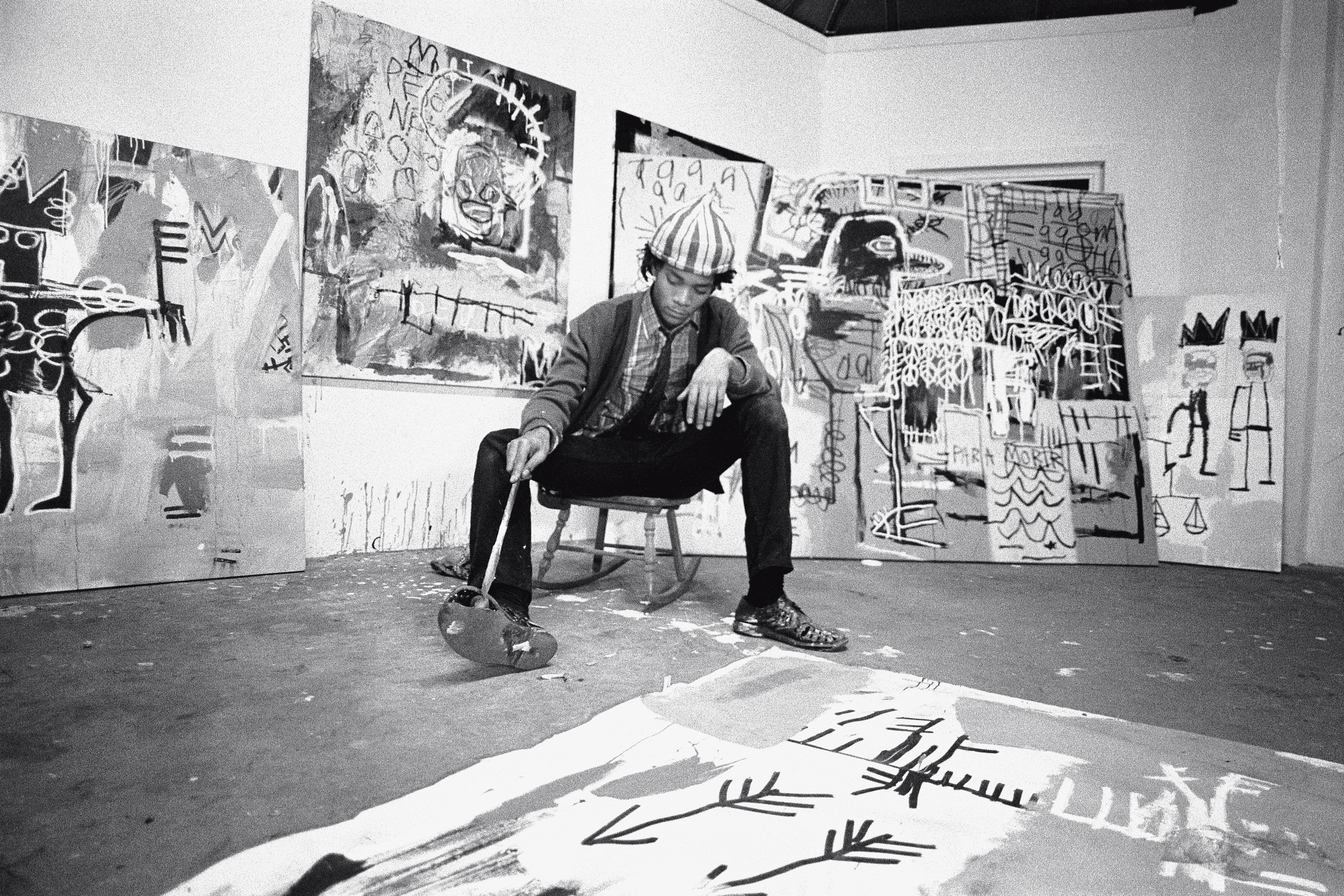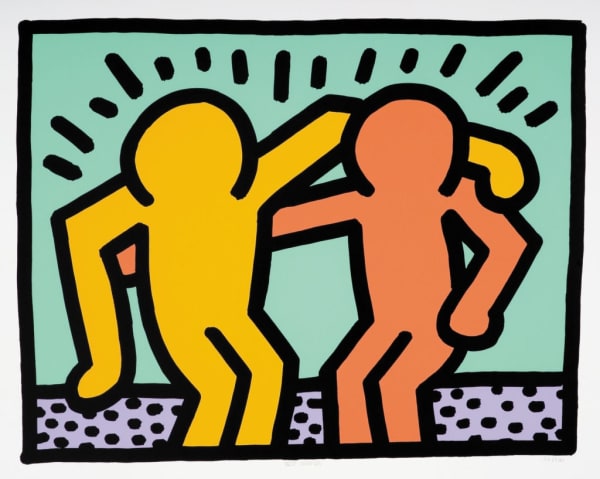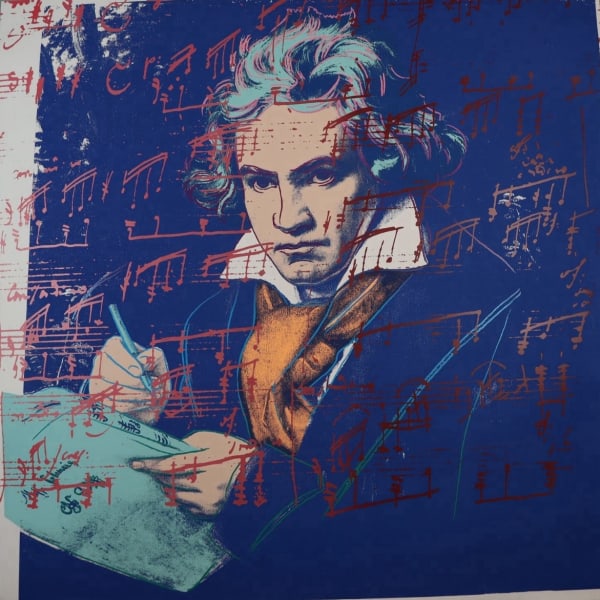In the 20th century, art underwent a radical transformation. Artists began to question not just what art looked like, but how it functioned in a world of mass media, consumerism, and social unrest. Among the most influential voices of this shift were Andy Warhol, Roy Lichtenstein, Keith Haring, and Jean-Michel Basquiat. These four artists helped break down the divide between high art and popular culture, rewriting the rules of art history in the process. This article explores how each artist contributed to that transformation by redefining technique, subject matter, and the role of the artist in society.
Andy Warhol: Art as Commodity
Andy Warhol revolutionized art by embracing the aesthetics of commercial reproduction. One of his most important innovations was his use of screenprinting, a process borrowed from the advertising industry. Unlike traditional painting, screenprinting allowed Warhol to produce multiple versions of the same image, often with slight variations in color and layering. This repetition wasn’t simply a mechanical convenience—it was a deliberate artistic choice, one that echoed the logic of mass production and consumer culture.
Warhol also challenged the traditional subject matter of art by focusing on celebrities, brands, and banal objects—everything from Marilyn Monroe to Campbell’s Soup cans. He presented fame and consumer goods not as critiques, but as reflections of modern worship. Perhaps his most subversive act was the creation of The Factory, his studio in New York that functioned more like a corporate office or assembly line than a traditional artist’s workshop. Here, art was outsourced, assistants helped produce work, and the line between art and business was fully erased. In doing so, Warhol elevated the brand of the artist to a cultural phenomenon, anticipating today’s influencer economy by decades. Discover Andy Warhol signed prints for sale.

Roy Lichtenstein: Irony and the Language of Reproduction
Roy Lichtenstein’s work explored how images are processed and understood in the age of mass communication. He made his mark by adapting imagery from comic books and commercial printing, translating them into monumental works of fine art. Lichtenstein’s use of Ben-Day dots—a printing method used in commercial illustration—allowed him to mimic the look and feel of machine-made images while painting them by hand. This paradoxical blend of craft and imitation highlighted the tension between originality and reproduction.
Equally revolutionary was Lichtenstein’s recontextualization of comic book panels. He did not invent his imagery; rather, he appropriated it, reframed it, and presented it on an epic scale. This appropriation questioned the very idea of artistic authorship and originality. Lichtenstein also used parody to great effect. His Brushstroke series, for example, took the emotive marks of Abstract Expressionism and rendered them with the precision of advertising, turning spontaneous gesture into stylized mockery. In doing so, Lichtenstein transformed visual irony into a critical artistic tool and helped usher in the age of conceptual and postmodern art. Discover Roy Lichtenstein prints for sale.

Keith Haring: Activism in Motion
Keith Haring broke new ground by taking art off the canvas and placing it directly into the public sphere. He began his artistic career by drawing with chalk on empty black advertising panels in New York’s subway system. This early work laid the foundation for his belief in art as public engagement—accessible to everyone, regardless of social class or education. Haring’s imagery, often featuring bold lines, vibrant colors, and recurring motifs like the Radiant Baby and barking dog, was designed to be instantly recognizable and universally understood.
Rather than focus solely on aesthetics, Haring’s art carried urgent social and political messages. He addressed issues such as the AIDS epidemic, apartheid, nuclear disarmament, and LGBTQ+ rights with fearless clarity. His belief in activism through art made him a key figure in the fight for social justice during the 1980s. Moreover, Haring embraced the commercialization of his work through the opening of the Pop Shop, a retail space that sold affordable art and merchandise. Far from diluting his message, this move reinforced his mission: to democratize art and bring it into everyday life. Haring thus redefined what it meant to be both an artist and an advocate. Explore Keith Haring original art for sale.

Jean-Michel Basquiat: Poetry, Power, and Identity
Jean-Michel Basquiat brought a new urgency and rawness to the art world, blending text, symbolism, and street sensibility into a powerful visual language. Emerging from the late 1970s New York graffiti scene under the alias "SAMO," Basquiat quickly transitioned into fine art while retaining the spontaneity and rebellion of street culture. One of his key innovations was the layering of fragmented words and phrases within his paintings, often referencing Black history, jazz musicians, anatomical drawings, and colonial violence. These text elements weren’t merely decorative—they functioned as embedded critiques and poetic reflections on identity, history, and systemic oppression.
Basquiat also mastered a hybrid style that fused neo-expressionist brushwork with iconography from both African diasporic culture and European art history. He could reference Leonardo da Vinci and African masks in the same piece, forcing a reevaluation of who art history includes—and excludes. His signature use of crowns, skulls, and skeletal forms gave his figures both a mythic and vulnerable quality, asserting Black presence in a predominantly white art world. Basquiat’s art was as intellectually complex as it was emotionally raw, making him one of the most important voices in the evolution of contemporary art. Explore Jean-Michel Basquiat original art for sale.

Collective Legacy: Rewriting the Rulebook
Together, Warhol, Lichtenstein, Haring, and Basquiat challenged the very foundation of what art could be and whom it could serve. They rejected the notion that art must be exclusive, reverent, or introspective. Instead, they embraced the imagery of advertising, cartoons, street life, and activism, creating new aesthetic codes that reflected and critiqued the world around them.
They democratized visual culture, turning everyday signs, slogans, and symbols into vessels of meaning. They also blurred the lines between commercial success and artistic credibility, paving the way for future generations of artists to navigate both spheres simultaneously. In doing so, they not only reshaped artistic techniques—they rewrote art history itself.
Legacy in the Age of Image Saturation
In today’s world of visual saturation and digital image-making, the legacy of Warhol, Lichtenstein, Haring, and Basquiat is more relevant than ever. They foresaw a world in which the image would dominate attention, define identity, and drive value. Their innovations continue to inform contemporary practice across media, fashion, design, and protest.
They weren’t just artists—they were architects of a new cultural vocabulary. And through their work, they continue to inspire us to see, think, and create differently.















